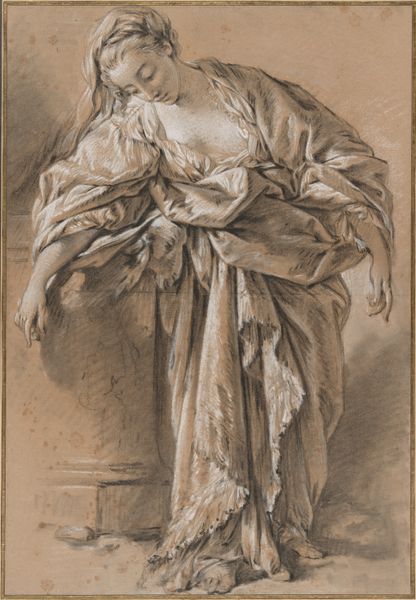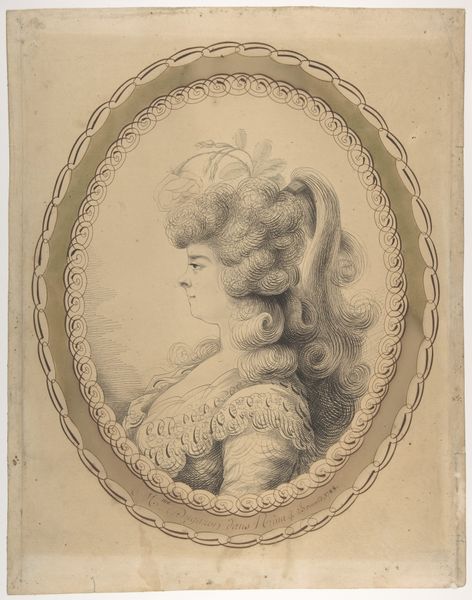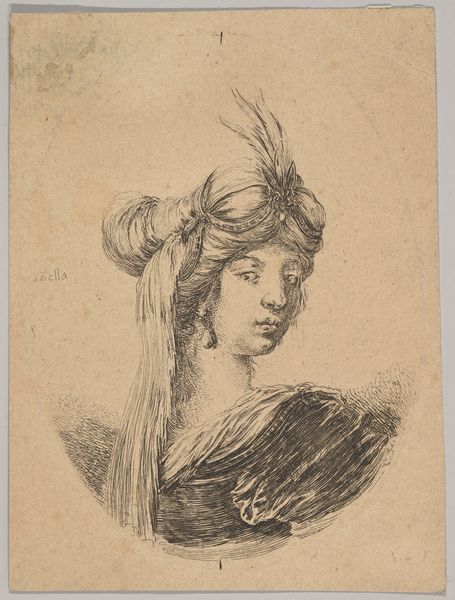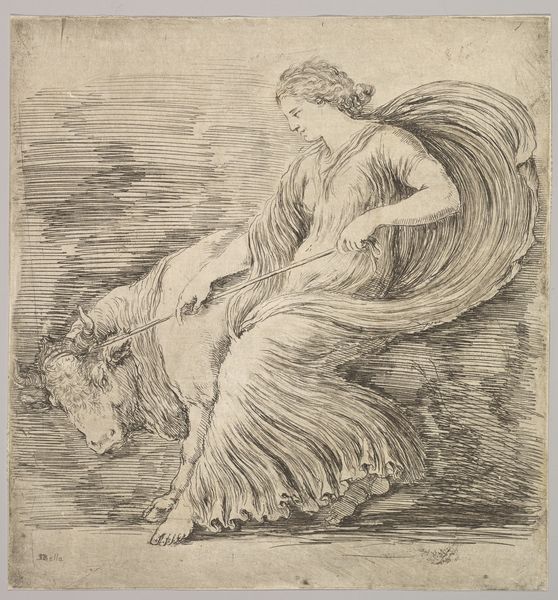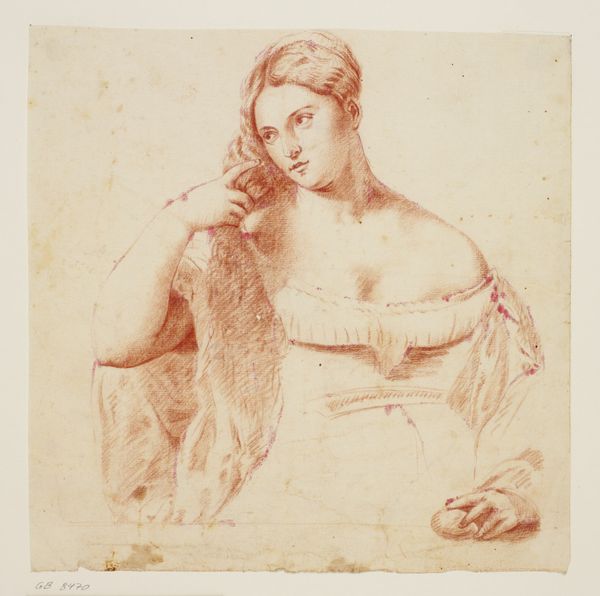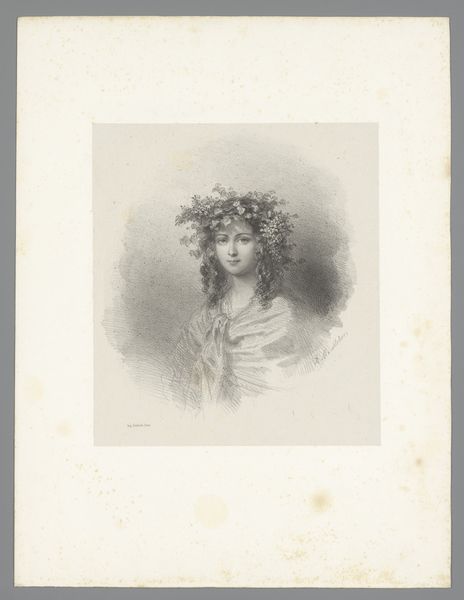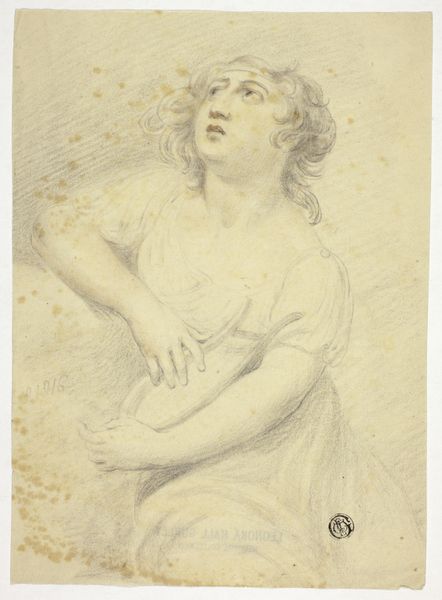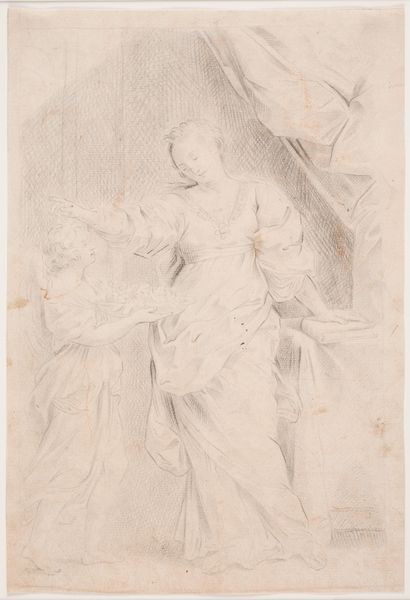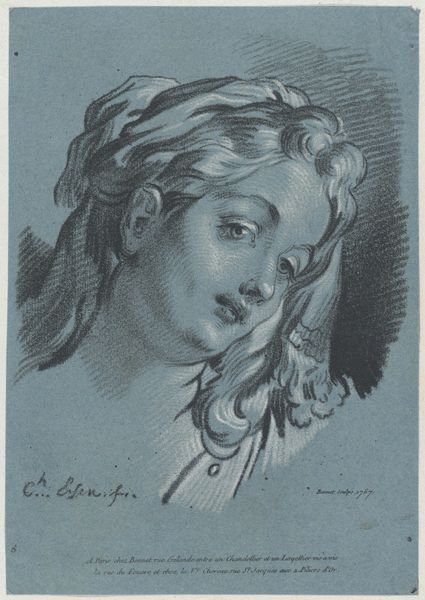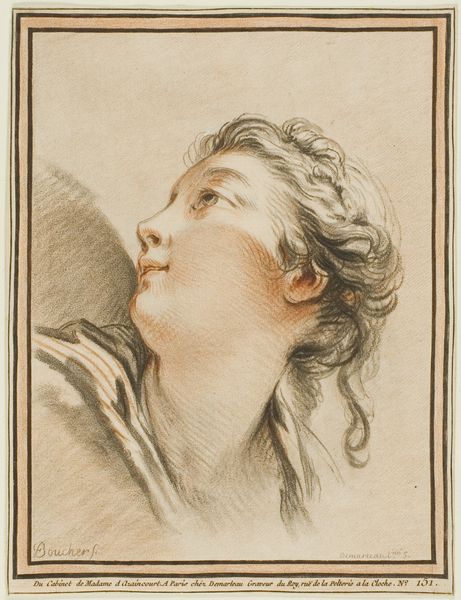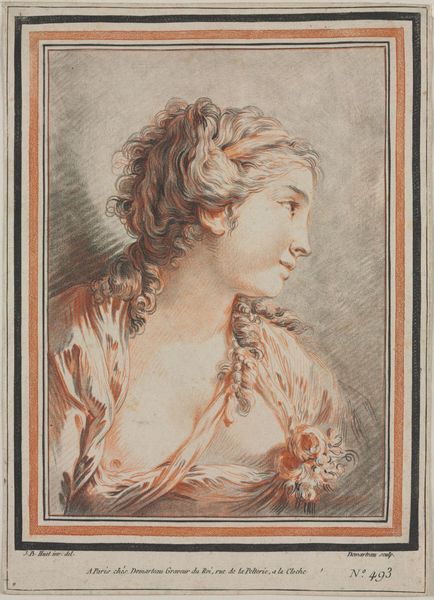
drawing, print, paper, ink, graphite, pen
#
portrait
#
drawing
#
neoclacissism
# print
#
paper
#
ink
#
romanticism
#
graphite
#
pen
#
portrait drawing
#
history-painting
#
portrait art
#
watercolor
Dimensions: 209 × 172 mm
Copyright: Public Domain
Editor: This is D. Watson's "Thalia," made around 1797 using pen, ink, and graphite. The soft lines and sepia tones give it a dreamy, ethereal quality. What do you see in this piece, considering it's a portrait drawing named after a Greek muse? Curator: It’s fascinating how Watson captures Thalia. Beyond a mere portrait, the rendering embodies the Muse’s spirit through symbolism. The wreath, for example, while classically-inspired, feels less about specific laurels and more about a general association with the arts and inspiration. Notice how her gaze is both demure and inviting – does this convey something of comedy and idyllic poetry, Thalia's domains? Editor: Yes, her expression seems to hold both lightness and depth. I'm wondering about the choice of materials; the ink and graphite give it such a delicate feel. Was that a common choice for depicting mythological figures? Curator: The delicacy of the materials aligns with Neoclassical ideals of simplicity and elegance. The medium becomes part of the message: evoking a sense of refined beauty and intellectual pursuit which defined that era’s understanding of the classical world. Does this technique enhance or perhaps even challenge our contemporary ideas of beauty? Editor: I think it softens the figure, making her more accessible and less like a distant, marble statue. It bridges the gap between the mythological and the human. Curator: Precisely! Watson’s "Thalia" isn't just a historical depiction, it's a cultural touchstone – reflecting evolving interpretations of the classical world. The enduring appeal of this Muse rests in the artist’s translation. Editor: I never considered how the artistic choices could act as a bridge between different cultural understandings of mythology. It's given me a completely new appreciation for portraiture.
Comments
No comments
Be the first to comment and join the conversation on the ultimate creative platform.
